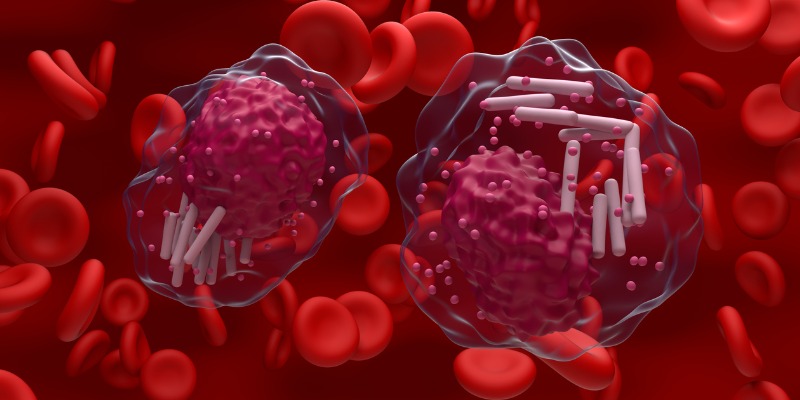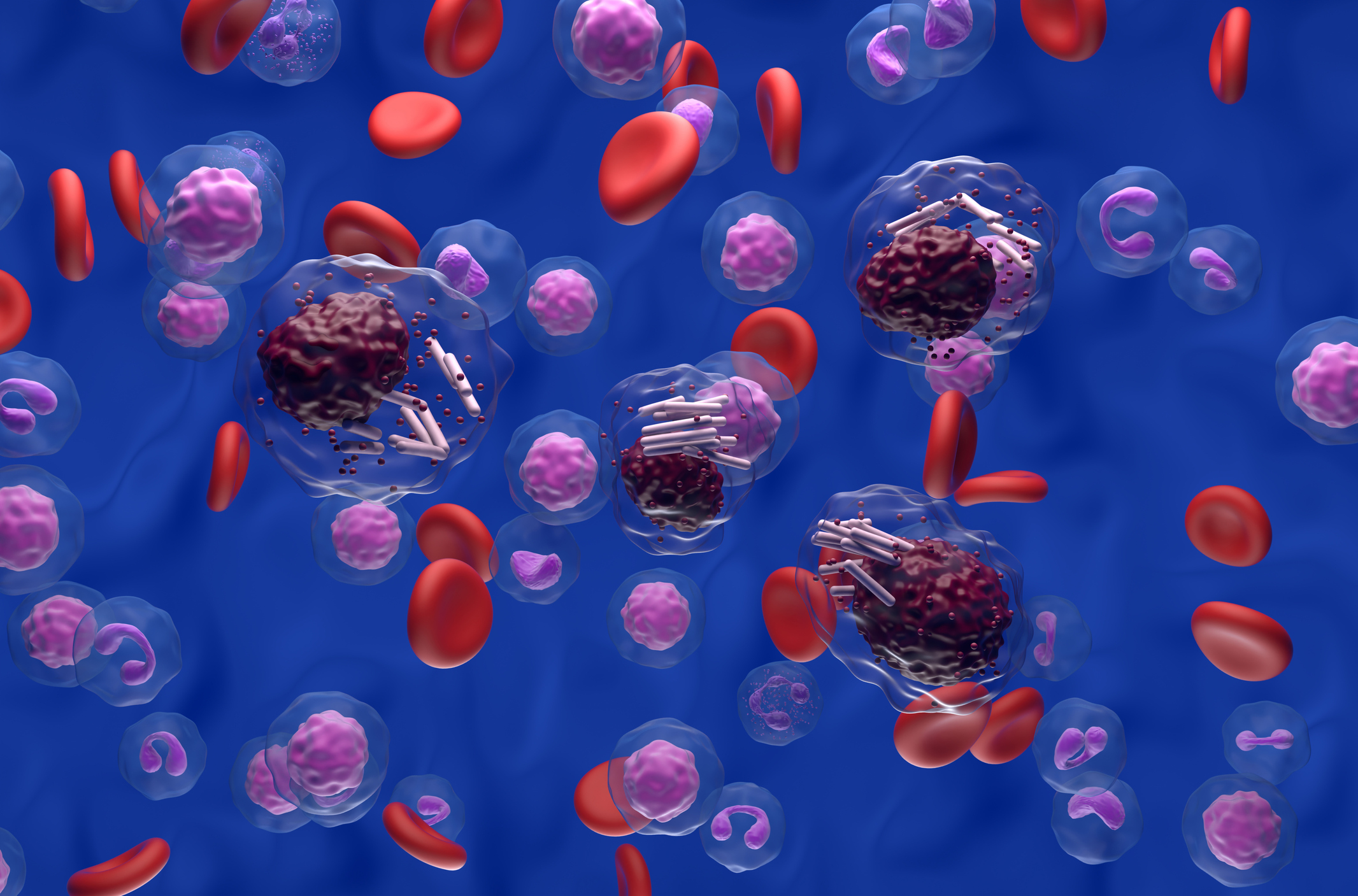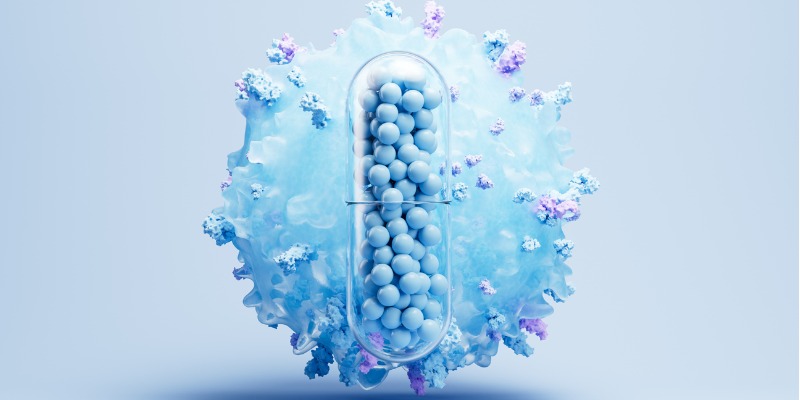
Adam Kittai, MD, an associate professor of medicine (hematology and medical oncology) at the Icahn School of Medicine at Mount Sinai, shares recent studies in chronic lymphocytic leukemia (CLL) he is most excited about, including the AMPLIFY and TRANSCEND 004 trials presented at the 66th American Society of Hematology (ASH) Annual Meeting & Exposition.
Which recent CLL research has stood out to you the most?
There were a few studies presented at ASH 2024 that were really exciting. The AMPLIFY study, presented by Jennifer Brown, MD, compared acalabrutinib plus venetoclax as a time-limited regimen with or without obinutuzumab versus chemoimmunotherapy. Patients who were treated with either acalabrutinib plus venetoclax with or without obinutuzumab had superior progression-free survival compared with chemoimmunotherapy.
Hopefully, this study is going to lead to the approval of an all-oral, time-limited option for patients with CLL. Before this, we had venetoclax plus obinutuzumab as our time-limited option, but that required the obinutuzumab via infusion. Now, if acalabrutinib plus venetoclax gets approved, this will be an all-oral option, and the infusion won’t be necessary.
The results of this study looked very similar to prior time-limited regimens, which makes me comfortable using the acalabrutinib plus venetoclax combination. But there will be trials being read out in the future, including CLL17, that will directly compare the combination of a BTK [Bruton tyrosine kinase] inhibitor plus venetoclax versus venetoclax plus obinutuzumab as well as the CELESTIAL study, which is zanubrutinib plus sonrotoclax versus venetoclax plus obinutuzumab. We don’t have direct evidence to compare targeted therapies to each other in a timely manner, but we will soon. This trial was time- limited options targeted therapies versus chemoimmunotherapy and hopefully will lead to the approval of that combination in the near future.
The other important study is the TRANSCEND 004 trial. This study looked at patients treated with lisocabtagene maraleucel [liso-cel], the CAR [chimeric antigen receptor] T-cell therapy, for patients with relapsed or refractory CLL. The complete response rate and overall response rate weren’t as high as we had hoped it would be, making use of CAR-T in this patient population a little lower than I would have otherwise wanted.
At ASH, the new results of TRANSCEND 004, which was the other arm of the study that combined ibrutinib plus liso-cel presented by William Wierda, MD, PhD, doubled the complete response and overall response rates that we saw with liso-cel alone. I’d like to see the full manuscript and analysis of this study, but it’s really encouraging that prior studies that showed that BTK inhibitors, like ibrutinib, might enhance the efficacy and safety [of] CAR-T are being recapitulated, showing that they likely do and should be used in accordance with CAR-T.
The 2 other studies I want to highlight from ASH 2024 are the BTK degrader studies. Patients who have relapsed disease to covalent BTK inhibitors, noncovalent BTK inhibitors like pirtobrutinib as well as venetoclax, have limited options. These BTK degraders might be a good option for patients if they get approved eventually.
As opposed to our normal covalent BTK inhibitors and noncovalent BTK inhibitors, which simply bind to BTK, inhibiting them from functioning, BTK degraders actually degrade the BTK, which makes the BTK not present at all. This is important because there are certain BTK resistance mutations that develop that lead to kinase-dead mutations that ultimately don’t rely on BTK to signal through the B-cell receptor but do rely on BTK as a scaffolding function with other kinases. These BTK degraders appear to work even in patients who have kinase-dead mutations, which makes them a viable option for patients who have already relapsed on primary treatments.
Whether or not these BTK degraders work better than our standard inhibitors is yet to be seen, but I’m sure there will be studies that look at this in the future. It was really nice to see the response data presented at ASH from 2 different BTK degraders, once again reaffirming proof of concept of other trials that we’ve seen in the past.
You recently published a study in Blood Cancer Journal on outcomes of patients with Richter transformation who received no prior chemoimmunotherapy. Can you please describe this study?
Patients with Richter transformation, which is when CLL transforms into an aggressive lymphoma—most often diffuse large B-cell lymphoma—continue to have poor outcomes. However, all of the studies that looked at patients with Richter transformation in the past included patients who had received chemoimmunotherapy for their CLL. The question was whether or not patients who develop Richter transformation in the modern era who have not received prior chemoimmunotherapy for their CLL, which we don’t do anymore, have different survival rates from what we classically saw. We know that chemoimmunotherapy can induce various molecular and genetic aberrations, which may lead to higher-risk disease in terms of their diffuse large B-cell lymphoma that they develop.
We did an international, multicenter, retrospective research study and collected over 300 patients with Richter transformation who never received prior chemoimmunotherapy. We found that their median overall survival was longer than we have seen in the past. After a median follow-up of 39 months, the median progression-free survival was 25 months, and the median overall survival was 25.8 months.
That being said, when we split the patients based on whether they did not receive any therapy for their CLL versus if they did receive therapy with targeted agents, there was a significant difference in those 2 patient populations. The mean overall survival for patients who had received prior CLL treatment was only 12 months, and the median overall survival for those who had not received prior CLL treatment was 55 months. This is recapitulating the fact that patients who have treatment for their CLL and then develop Richter transformation have much worse survival than patients who have received no prior treatment for their CLL. This comes out as one of the most telling prognostic factors for patients with Richter transformation.
We also looked at whether or not any specific treatment that is being used for patients with Richter transformation looked like it might be better than other treatments. We looked at various treatments in the first line, such as chemotherapy alone, chemotherapy plus targeted agents, and targeted agents alone versus another group that included a variety of different treatments. We found that nothing appeared to work better than anything else. This was a little discouraging, as I hoped we’d find a signal for finding a treatment paradigm that might improve patient survival.
Lastly, we did a multivariable analysis and found that prior treatment for CLL, older age, complex karyotype in the CLL compartment, and higher LDH [lactate dehydrogenase] were all statistically significant as independent prognostic factors for worse survival for patients with Richter transformation. None of these things seen on multivariable analysis are new; we knew that patients with higher LDH and complex karyotype did worse with Richter transformation. But this is the first time they were showing this in a group of patients who never got chemoimmunotherapy.
To end on a positive light, the overall survival of these particular patients with Richter transformation was about twice as long as what we’ve seen previously, which tells us that maybe we are doing something right with our new therapies. However, patients who have prior treatment for their CLL continue to do poorly with a median overall survival of 12 months. There’s still a lot of work to do.
This does require follow-up work, but I am interested in looking at patients who received allogeneic stem cell transplant versus CAR-T for Richter transformation. This study wasn’t meant to compare these 2 groups, but we found that the 50 or so patients who got [an] allogeneic stem cell transplant had an overall survival of 54 months, compared with 9 months for those who had CAR T-cell therapy. This doesn’t mean that we should be focusing on giving allogeneic stem cell transplantation over CAR-T cell therapy for patients with Richter transformation. This probably has a lot to do with selection bias, and that patients who got a complete response were able to get an allogeneic stem cell transplant, whereas those that didn’t were able to get CAR T-cell therapy.
What this does highlight—and what I think we have lost sight of in patients with Richter transformation—is that the use of allogeneic stem cell transplant should be considered in all circumstances. If we are able to get patients into a complete response prior to allogeneic stem cell transplantation, they should move forward, and we shouldn’t abandon allogeneic stem cell transplant entirely for these patients.






 © 2025 Mashup Media, LLC, a Formedics Property. All Rights Reserved.
© 2025 Mashup Media, LLC, a Formedics Property. All Rights Reserved.